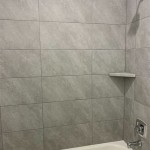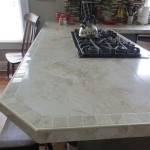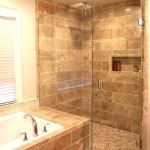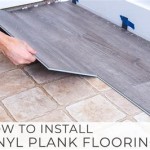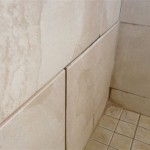Do I Need Backer Board for Floor Tile on Concrete Slab?
The question of whether backer board is necessary when tiling directly over a concrete slab is a common one among homeowners and contractors alike. The answer, however, isn't a simple yes or no. Numerous factors influence the decision, including the condition of the slab, the type of tile being installed, and the specific requirements of the installation environment. Understanding these factors is crucial for ensuring a successful and long-lasting tile installation.
A concrete slab provides a rigid and stable substrate for tiling, which, in many ways, is ideal. However, concrete is also porous and susceptible to moisture transmission, cracking, and uneven settling. These characteristics can negatively impact the adhesion and integrity of a tile floor. While tiling directly onto concrete can sometimes be a viable option, careful consideration must be given to mitigating potential problems. Backer board, also known as cement board or concrete backer unit (CBU), offers several advantages that can improve the overall performance and longevity of a tile installation over concrete.
The practice of laying tile directly on concrete slabs has been around for years, especially in areas where budget constraints are a major factor. This method, often referred to as a "thin-set" installation, relies on a layer of mortar alone to bond the tile to the concrete. Proponents of this method argue that if the concrete is properly prepared and in good condition, it can provide an adequate surface for tile adhesion. However, the risks associated with this approach can outweigh the potential cost savings, particularly in the long run.
Proper preparation of the concrete slab is paramount, regardless of whether backer board is used. This includes thorough cleaning to remove any dirt, debris, paint, adhesive residue, or sealants that could interfere with mortar adhesion. Furthermore, the slab should be level and free from significant cracks or imperfections. Any cracks should be properly repaired using crack isolation membranes or patching compounds designed for concrete repair. Failure to adequately prepare the concrete can lead to tile cracking, loosening, and ultimately, the need for costly repairs or replacement.
The type of tile being installed also affects the decision of whether to use backer board. Larger tiles, especially those exceeding 12x24 inches, are more susceptible to cracking if the substrate is not perfectly level or if there is any movement in the concrete. The larger the tile, the less forgiving it is to imperfections in the underlying surface. Similarly, natural stone tiles, such as marble or granite, are often more prone to moisture absorption and staining than porcelain or ceramic tiles, making a moisture-resistant backer board a desirable choice.
Before making a decision, homeowners and contractors should consult with tile installation professionals and refer to the tile manufacturer's recommendations. These resources can provide valuable guidance on the best practices for specific tile types and installation conditions. Failure to adhere to manufacturer recommendations can void warranties and lead to installation failures.
Key Point 1: Moisture Management
One of the primary benefits of backer board is its ability to resist moisture. Concrete is porous and can absorb moisture from the ground, from spills, or from humidity in the air. This moisture can then migrate through the concrete and affect the tile adhesive, potentially weakening its bond and causing the tile to lift or crack. Backer board, typically made of cementitious materials, provides a moisture-resistant barrier between the concrete and the tile, protecting the adhesive and the tile itself from the harmful effects of moisture.
In environments with high moisture levels, such as bathrooms, kitchens, and basements, the use of backer board is particularly important. These areas are frequently exposed to water and humidity, increasing the risk of moisture-related problems. While waterproofing membranes can be applied directly to concrete, backer board provides an additional layer of protection and helps to ensure a more durable and long-lasting installation. Some backer boards are specifically designed with enhanced moisture resistance, making them ideal for wet environments. These boards often incorporate special coatings or additives that further reduce water absorption.
Furthermore, backer board can help to prevent the growth of mold and mildew, which can thrive in moist environments. Mold and mildew can not only damage the tile and adhesive but can also pose health risks to occupants. By creating a moisture-resistant barrier, backer board helps to keep the area dry and inhospitable to these organisms. This is especially important in bathrooms and kitchens, where mold and mildew are common problems.
The use of a vapor barrier underneath the concrete slab itself is also an important consideration. If the concrete slab was not constructed with a proper vapor barrier, moisture can readily migrate upwards through the concrete. In such cases, the benefits of backer board are further amplified, acting as a critical second line of defense against moisture damage.
Key Point 2: Crack Isolation and Movement Accommodation
Concrete slabs are susceptible to cracking due to settling, temperature changes, and other factors. Even hairline cracks in the concrete can telegraph through to the tile layer, causing the tiles to crack as well. Backer board can provide a degree of crack isolation, helping to prevent these cracks from affecting the tile. While backer board isn't a substitute for addressing underlying structural issues, it can absorb minor movements and stresses in the concrete, protecting the tile from damage.
Some backer boards are specifically designed with crack isolation properties. These boards often incorporate a flexible membrane or a special coating that allows them to flex slightly without cracking. This flexibility helps to absorb movement in the concrete and prevent it from transferring to the tile. When choosing backer board for crack isolation, it's important to select a product that is rated for the expected level of movement in the concrete.
In addition to crack isolation, backer board can also help to accommodate thermal expansion and contraction. Concrete expands and contracts with changes in temperature, and this movement can put stress on the tile layer. Backer board can provide a buffer between the concrete and the tile, allowing for some degree of movement without causing the tile to crack or loosen. The expansion and contraction rates of concrete and tile differ, and backer board can help to mitigate the effects of these differences.
Proper installation of the backer board is crucial for maximizing its crack isolation and movement accommodation benefits. The backer board should be securely fastened to the concrete slab using appropriate fasteners, such as screws or nails. The seams between the backer board sheets should be properly taped and mudded to create a continuous surface. Failing to properly install the backer board can compromise its ability to protect the tile from cracking.
Key Point 3: Creating a Level and Uniform Surface
Even seemingly smooth concrete slabs can have subtle inconsistencies in their surface. These inconsistencies can affect the levelness of the tile floor and create an uneven appearance. Backer board provides a consistent and uniform surface for tiling, helping to ensure a level and aesthetically pleasing result. The flat, even surface of backer board makes it easier to achieve proper tile alignment and spacing.
Backer board can also be used to correct minor imperfections in the concrete slab. If the concrete is slightly uneven, shims can be used underneath the backer board to level it out. This is especially helpful when installing large format tiles, which are more sensitive to variations in the substrate. While backer board should not be used to correct significant structural problems, it can be a valuable tool for addressing minor surface irregularities.
The thickness of the backer board can also contribute to creating a level surface. Thicker backer board is typically more rigid and less likely to flex, providing a more stable base for the tile. When choosing backer board, it's important to select a thickness that is appropriate for the tile type and the expected load on the floor. In areas with heavy foot traffic or where heavy objects will be placed, a thicker backer board may be necessary.
When installing backer board over a concrete slab, it's important to ensure that the surface is clean and free from debris. Any dirt or contaminants can prevent the backer board from adhering properly to the concrete. The backer board should be installed according to the manufacturer's instructions, using appropriate fasteners and spacing. Proper installation is essential for ensuring that the backer board provides a level and uniform surface for tiling.
In conclusion, while tiling directly onto a concrete slab is sometimes feasible, the use of backer board offers significant advantages in terms of moisture management, crack isolation, and creating a level surface. The decision of whether to use backer board should be based on a careful assessment of the specific installation conditions, the type of tile being installed, and the desired level of durability and longevity. Consulting with tile installation professionals and adhering to manufacturer recommendations can help to ensure a successful and long-lasting tile installation.

How To Install Cement Board On A Floor Diy Family Handyman

Cement Board Installation On Floors 5 Mistakes To Avoid Diytileguy

How To Install Hardie Backer Cement Board On Floors James Pros
How To Install Tiles On Concrete Floors Stonesuper
How To Tile Onto Concrete Floors Porcelain Super

Tiling Over A Ed Concrete Slab Fine Homebuilding

How To Install Cement Board Cbu For Floor Tile
:max_bytes(150000):strip_icc()/can-you-install-tile-directly-on-concrete-1822600-04-458f7bb6c78348c1835cf8054ef36553.jpg?strip=all)
How To Install Tile Over Concrete

Hardie Backer Boards Everything You Need To Know Walls And Floors

The Ultimate Guide To Underlayment For Tile
Related Posts

